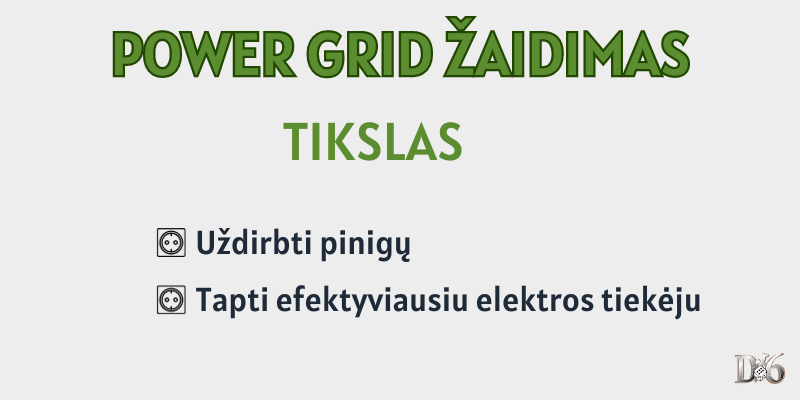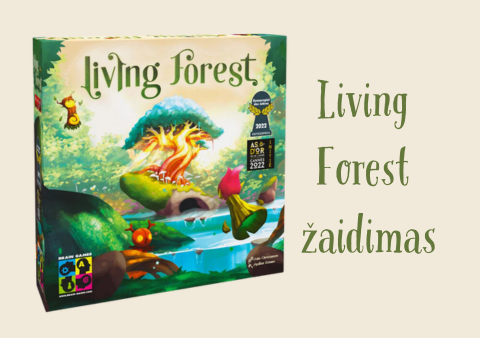Power Grid is known as one of the best examples of an economic-strategy game. This board game has attracted a lot of attention from players because of its many tactical possibilities.
In this article, we will discuss the basic facts of the board game, the gameplay, the rules and the pros and cons of the game.
Key facts
Designed for: In 2019
Type: Strategic, economic
Number of players: 2-6
Duration: 2-3 hours
Level of complexity: complex
Age of players: from 12 years
Power Grid - what is it?
The aim of the game
The Power Grid player has a dual objective: to make money and to become the most efficient electricity supplier.
- Money:
The first goal is to make as much money as possible. Players invest in electricity generation capacity, trying to build more and better power lines and buy the right fuel to generate electricity as cheaply as possible.
Profits are made by selling electricity to cities that need it and by taking certain positions in the auction. You can also profit from the increase in the value of your company.
- Efficiency:
The second objective is to become the most efficient electricity supplier. This means managing our resources so that our electricity generation capacity is used as efficiently as possible.
The player has to strike a balance between investment in new generation and competitive electricity prices.

Duration
The length of the game may vary depending on the number of players and their experience level. On average, a single game lasts about 2-3 hours, but it can be longer if more players are involved or if they make slower decisions.
Complexity
Power Grid can be considered a medium or even high difficulty game, but it is still not difficult to learn.
The rules are clear and logical and the mechanics are well balanced. The game requires mathematical thinking, but does not require very detailed calculations.
Age of players
Due to its complexity and the need to understand economic decisions, Power Grid is recommended for ages 12 and up.
The game is suitable for those who like challenge and strategy in board games, but may be too difficult for children or beginners.
Game pluses
✅ Strategy: The game encourages the application of strategic factors. Players have to plan their electricity grid, think about profitable purchases and electricity production to achieve better results.
✅ The game can be played multiple times: Every time you play the game, it's different. At least one area of the map may be blocked, the order in which power stations are placed varies, and small changes at the start of the game lead to big differences as the game progresses.
✅ Helping the underdog: Help is given to the player who is furthest behind, e.g. to buy the cheapest resources. This gives them the opportunity to re-enter the game and avoid excessive gaps, making the game more interesting.
✅ Engaging: Even when not making a move, a player can watch other players and see if the actions taken by others will have an effect on his game.
✅ High-quality game details: The game is beautifully produced, with detailed and colourful maps and wooden city details.

Game cons
Despite its strengths, the game has some weaknesses:
❌ Duration: A game can be too long if players take too long to strategise and make the right decisions. Players who like faster or easier games may not like it.
❌ Complexity of the rules: The game rules may seem too complex for new players.
❌ Requires skills: Beginners often have little or no chance against experienced players.
Power Grid game - rules
The game board consists of two sides with maps of the United States of America and Germany. At the start of the game, a map is selected and placed in the middle of the table.
Each player chooses one area from six different colours: red, green, brown, yellow, purple and blue.
Players jointly select areas, with the most important conditions being that these areas are adjacent to each other. (Players can start building their networks in any coloured area in the first step.)
Each player chooses a house of the desired colour. Each player then places one house on the scoring track, which shows how many cities that player has already logged in to, and another house on the game progress track.
The composition of the resource market is determined by the table in the game rules, by adding wooden tokens representing the four fuel sources: coal, oil, waste and uranium.
The number of these chips depends on the number of players in the game. In addition, each player receives an initial amount of USD 50 in Elektro (the in-game currency).
An auction is then organised for electricity generation. The power plant cards are placed on 3×3 cards and numbered from 3 to 50.
Each card specifies the starting price, the type of fuel required, how much fuel it can hold and how many cities it can supply electricity to.
How to prepare for the game
- Make sure you have all the components you need for the game and have them ready to play.
- Place the game board in the middle of the table. It shows a map with the location of the cities.
- Shuffle the Electricity cards in a common deck and remove the top eight cards and place them next to the Electricity market. This is where you will find the power plants that are available for purchase. The remaining power plant cards are placed in the draw pile.
- Place the resource tokens (coal, oil, waste and uranium) next to the game board for easy access by all players.
- Each player should receive an initial amount of money (in various denominations). The rest of the money should be placed in such a way that players can exchange it during the game.
- Players' coloured houses are used to mark the cities they control, so make sure each player has their own set of houses.
- Use the chips to mark the current order of players during the game.
- Turn cards affect the cost of resources and need to be sorted by resource type and placed in a visible place.
- Set up a beginner player. You can use the method of your choice, for example the youngest player goes first.
- Give each player a starting amount of money, which may vary depending on the year or type of game.
- Allow the player to choose a colour and take the corresponding set of houses, chips and any additional components associated with their chosen colour.
- Set the market map by placing the eight power plant cards and the resource chips.
Stages of the game
The game is played in several stages with different actions and decisions. The main stages of the Power Grid game are:

1. Determine the order of players
- In the first round, the order of players is determined randomly by drawing a card. Each player draws one card and the player with the highest card number starts the game.
- In subsequent rounds, the player with the highest number of connected cities starts the game.
2. Auction phase under way
- In this phase, players bid for the power plants to be auctioned.
- Players draw cards and can choose whether the power plants on sale are worth their bet.
- The highest bidder buys the power plant, while the losers receive a small compensation.
3. Resource procurement phase
- In the generation of electricity, resources are essential to supply our cities with electricity.
- There are four main types of resources: coal, oil, waste and uranium.
- Resources are limited and their price depends on demand.
- Players can buy as many resources as the power plants use.
4. Construction phase
- Players expand their electricity grid by building new cities or upgrading existing connections on the game board.
- The cost of building links to cities depends on the distance between cities and the number of links.
5. Bureaucracy phase
- This phase is important for the game as players make important decisions that affect the development of their electricity grid, their economic activity and the course of the game.
- This is a challenging and strategic phase of the game, where players must consistently develop their electricity empire.
- Players have to check the revenues and costs of their electricity grids, and make new rules if they are needed to continue the game.
- To buy missing electricity, connect new cities, pay for new resources or upgrade them.
6. The end phase
- This is the reorganisation phase, during which players prepare for the next round by removing all depleted resources and renewing their power plant market.
These steps are repeated in each round of the game until players reach the victory condition of connecting a certain number of cities.
Power Grid game - Scoring
Points are calculated according to several criteria:
- Electricity supply: At the end of the game, players are awarded points based on their electricity supply capacity. A player scores more points if he manages to supply more cities with electricity than other players. In addition, the more cities a player owns where his electricity is supplied, the more points he receives.
- Electricity network: Players also get extra points for the efficiency of their electricity grid when more cities are connected.
- Electricity generation: The player receives points for the electricity generation they have available. High electricity generation capacity generates more points.
- Money: The amount of money and capital a player has also affects the calculation of points.
Resources
Players use various resources to generate electricity at their power stations and power the cities on the game board. The main resources used in the game are:

- Carbon. This is one of the most common resources in the game. Many of the game's power stations need coal to run. The price of coal depends on the card you draw, and it usually becomes more expensive as the game progresses. Players need to buy and stockpile coal to keep their power stations running efficiently.
- Oil. There is another popular resource used for the operation of certain power plants. The price of oil, like coal, can vary depending on the card drawn. Players need to manage their oil reserves to ensure that their power stations run properly.
- Waste. Some play power stations can burn waste and generate electricity from it. These are much cheaper than coal and oil. This is a cost-effective and environmentally friendly way of producing energy. Players who invest in waste-based power plants can make significant savings.
- Uranus. is the game's unique and most advanced fuel resource. It is used for high-level nuclear power plants. Uranium is more expensive than coal, oil or waste, but uranium power plants are often very efficient.
End of game
The game ends when a player reaches a certain number of cities in his/her current power grid (depending on the number of players). The winner is the player whose electricity grid can supply a certain number of cities.
The game ends when players have:
What is in the game kit?
The Power Grid set consists of a number of key components that are essential for the game:
- Map
The game map is a key component of the game, representing a specific region where competition for electricity supply will take place.
The size of the region varies depending on the version of the game or the add-ons purchased, but it usually includes a large number of cities where players need to expand their electricity grid. - Power stations
The board game set contains a large number of electricity generation source cards, which correspond to different types of energy sources.
These cards represent the possible ways in which players can generate electricity and the number of cities they can serve. - Market cards
Market cards set electricity demand and prices in cities where players compete.
They play an important role in determining where electricity can be sold profitably and how much revenue can be generated. - Game Chips and Money
The game uses 84 city tokens, which represent the expansion of the player's electricity grid, and money, which is needed for electricity generation, the construction of supply infrastructure and other in-game activities. - Additional game components
Markers to indicate players' positions and special cards, coloured accounting charts where players keep their money and fuel reserves.
Coloured pieces that mark the players' electricity grids on the board. Houses are used to mark the cities they control. - Game rules
Rules are essential to understand the game mechanics and to progress through all possible stages of the game.
They explain how auctions work, how chips move around the map, and other gameplay details.

- 21 cities in a 2-player game;
- 17 cities in a 3 or 4 player game;
- 15 cities in a 5-player game;
- 14 cities in a 6-player game.
At the end of the game, the winner is not the one with the most generating capacity, but the one that can use it efficiently and make a profit. In the event of a tie, the winner is the one with the most money.
The story behind the game
The Power Grid board game was developed in 2004 by German game designer Friedemann Friese, known for his green-haired characters and original game titles.
The board game is developed from his previous game Funkenschlag, which was about the German electricity grid. This game is more versatile and has more options, as it has different maps and power stations that can be combined in different ways.
The game quickly became popular in Europe and beyond, attracting the attention of players thanks to its unique gameplay mechanics.
Summary
Power Grid is a challenging but fun board game, perfect for players who like strategy and competition.
It is a well-balanced way of spending time, where every decision has long-term consequences, which provides excellent opportunities for strategic thinking.
It also encourages interaction and sincere communication. It is the perfect choice for board game enthusiasts looking for a challenge and strategic thinking.
What is the purpose of the Power Grid❓
The player has to achieve a double objective: to make money and to become the most efficient electricity supplier.
How many people can play the board game Power Grid❓
The board game is recommended for 2-6 players.
What is the recommended age of players❓
The game is recommended for ages 12 and up.
What is the duration of the game❓
A board game lasts about 2-3 hours, but can be longer if more players are involved or if they are slower to make decisions.
What type of game❓
This is a strategy board game. Specifically, it belongs to the category of economic strategy games.





